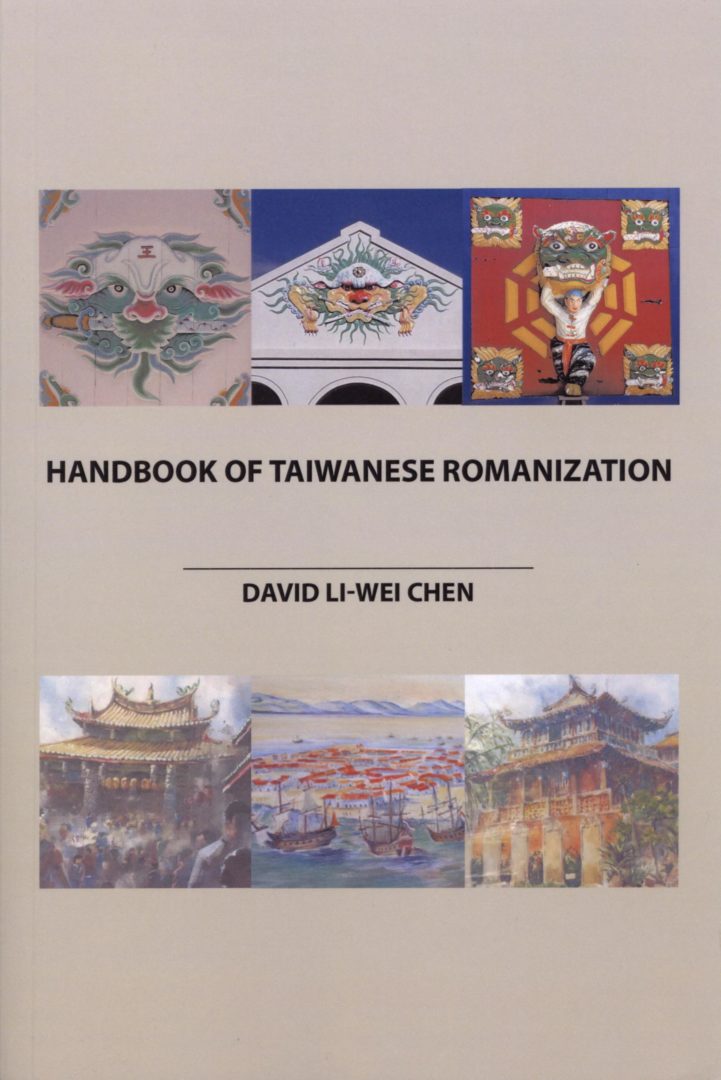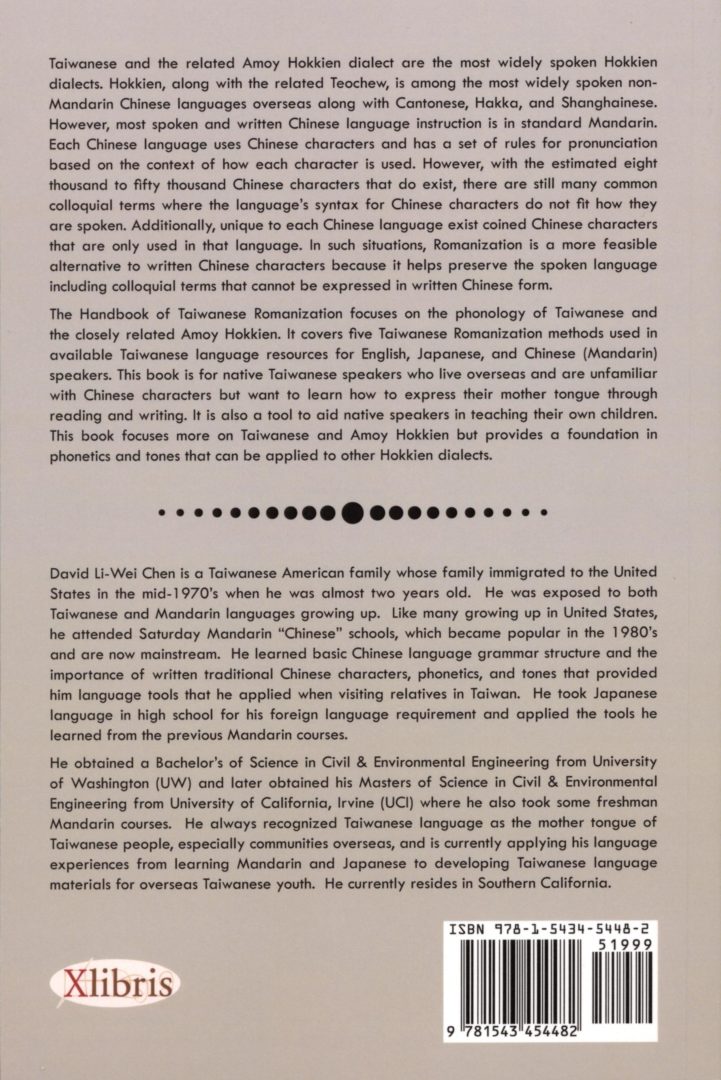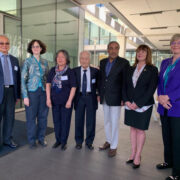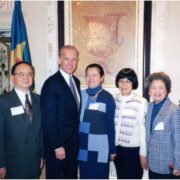Handbook of Taiwanese Romanization
by DAVID LI-WEI CHEN


PREFACE
There are those who believe that Taiwanese and related Hokkien dialects are just spoken and not written, and can only be passed down orally from one generation to the next. Historically, this was the case with most Non-Mandarin Chinese languages. Grammatical literacy in Chinese characters was primarily through Classical Chinese until the early 1900’s. Romanization in Hokkien began in the early 1600’s with the work of Spanish and later English missionaries with Hokkien-speaking Chinese communities in the Philippines and Malaysia. Early missionaries recognized differences between the written Chinese grammar versus the spoken languages.
Spanish missionaries in Manila, Philippines first developed Romanization of Hokkien to interact with the Hokkien communities living there. English Presbyterian missionaries further developed Hokkien Romanization in Malacca (what is now West Malaysia and Singapore) by provided detailed records of Choân-chiu (Quánzhōu) 泉州 and Chiang-chiu (Zhāngzhōu) 漳州 dialects spoken in the region. This English Presbyterian missionaries later brought their linguistic work to Ē-mn̂g (Xiàmén) 廈門 (also known as Amoy) in Southern Fujian Province, China where they finalized the development of Church Romanization known as Pe̍h-ōe-jī 白話字 (POJ) based off the prestige Amoy Hokkien dialect (understood by both Choân-chiu and Chiang-chiu peoples). They eventually brought Pe̍h-ōe-jī 白話字 to Taiwan in the mid-1800’s. This was readily used in Taiwan because Taiwan was also settled by men from both Choân-chiu and Chiang-chiu.
Taiwanese and Amoy Hokkien are considered to be the prestige Hokkien dialects. However, unlike the English language, Taiwanese and Amoy Hokkien do not have official language status anywhere, and multiple methods of Taiwanese Romanization do exist. Taiwanese/Hokkien language resources are primarily available in Mandarin and Japanese. Almost all English language resources available for Taiwanese/Hokkien were published between 1940 and 1985. The majority of English langauge resources are out-of-print (Note: Taiwanese and Hokkien immigration to United States and Canada only began in the 1960’s). The latest trend in Taiwanese/Hokkien language resources, cater to Vietnamese and Indonesian-speaking laborers who are currently in Taiwan.
Romanization methods differ from one another in spelling of syllables and in tone diacritics (markers). In some Romanization methods, syllable/tone combinations correlate directly with the Chinese characters (when applicable) and have tone changing rules or tone sandhi, that are required for reading. Other Romanization methods account for tone sandhi in their spelling, and are strictly for practice in speaking and reading aloud.
The Handbook of Taiwanese Romanization focuses on the phonology of Taiwanese and the closely-related Amoy Hokkien. It covers five Taiwanese Romanization methods used in available Taiwanese language resources in English, Japanese, and Chinese (Mandarin). This book is for native Taiwanese speakers who live overseas who are unfamiliar with Chinese characters who may want to cultivate the learning of their mother tongue. This is accomplished by learning how to read and write Taiwanese Romanization.
In addition to Romanization, there are the eight Taiwanese tones and 11 tone sandhi rules (tone-changing rules known in Taiwanese as piàn-tiāu 變調). Taiwanese and Hokkien tones are the same, but tone sandhi varies slightly between the Taiwanese and Amoy Hokkien. My emphasis will be on Taiwanese, but I will also provide the reader Amoy Hokkien for comparison. Both are very similar sounding. Tone diacritical markings vary between the different Taiwanese Romanization methodologies. It is important for the student to learn spelling conventions and tone markers for one Romanization method at a time. Do not combine more than one Taiwanese Romanization method in the same phrase or sentence.
Since POJ Romanization is the most common form, I will introduce tools using POJ Romanization. We will cover phonics, the eight tones, tone sandhi rules, and literary and vernacular speech forms of Taiwanese/Hokkien for each of the Chinese characters.
I will also provide supplementary materials for remaining Romanization methodologies that are widely available either in Taiwanese language books with audio or by apps on smartphone:
- Pe̍h-ōe-jī 白話字 (POJ)
- Tâi-uân Lô-má-jī Phing-im Hong-àn
台灣羅馬字拼音方案 (Tailo)
- Bodman Romanization
(Used in Spoken Taiwanese and Spoken Amoy Hokkien, written by Nicholas C. Bodman).
- Dāighì Tōngiōng Pīngim 台語通用拼音 (DT)
- Tongiong Taiwanese Dictionary 通用台語字典
I assert that my manuscript contains an accurate English translation (accurate in tone, meaning and content) of any and all foreign-language text that is included in my manuscript.
David L. Chen, 2017
| CONTENTS | |
| · Pe̍h-ōe-jī 白話字 (POJ) | 99 |
| · Tâi-uân Lô-má-jī Phing-im Hong-àn
台灣羅馬字拼音方案 (Tailo) |
115 |
| · Bodman Romanization | 131 |
| · Dāighì Tōngiōng Pīngim
台語通用拼音 (DT) |
147 |
| · Tongiong Taiwanese Dictionary
通用台語字典 |
163 |
| TAIWANESE COMPUTING IN POJ AND TAILO | 179 |
| · Chinese Character Input and Keyboards | 183 |
| · TaigIME 臺語輸入法設定 | 185 |
| · FHL Taigi-Hakka IME
信聖愛台語客語輸入法 3.1.0版 |
189 |
| · 羅漢跤Lohankha台語輸入法 | 193 |
| · Exercise A. Practice Typing a Self-Introduction in
白話字 Pe̍h-ōe-jī Romanization. |
195 |
| · Exercise B. Practice Typing a Self-Introduction in
台羅 Tâi-lô Romanization. |
203 |
| MENGDIAN 萌典 ONLINE DICTIONARY AND THESAURUS | 211 |
For more information, please click 1196. Handbook of Taiwanese Romanization
Published in 11/2017
Donated by Mr. David Li-Wei Chen 02/2018
Posted in 02/2018





